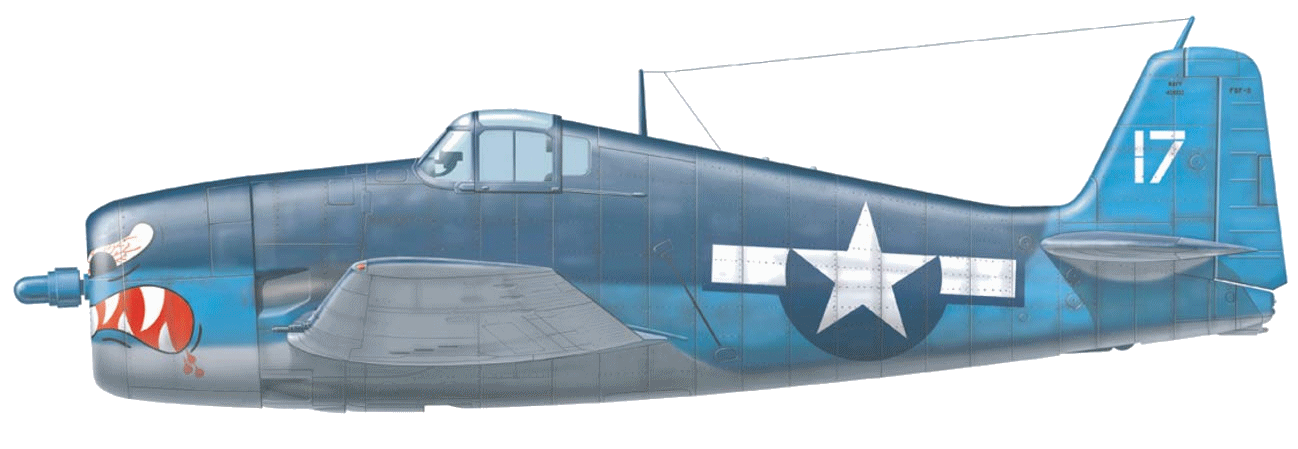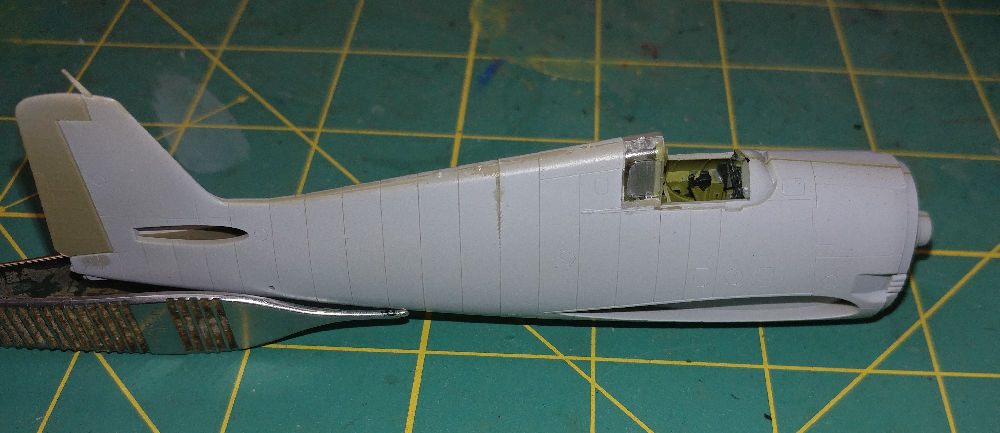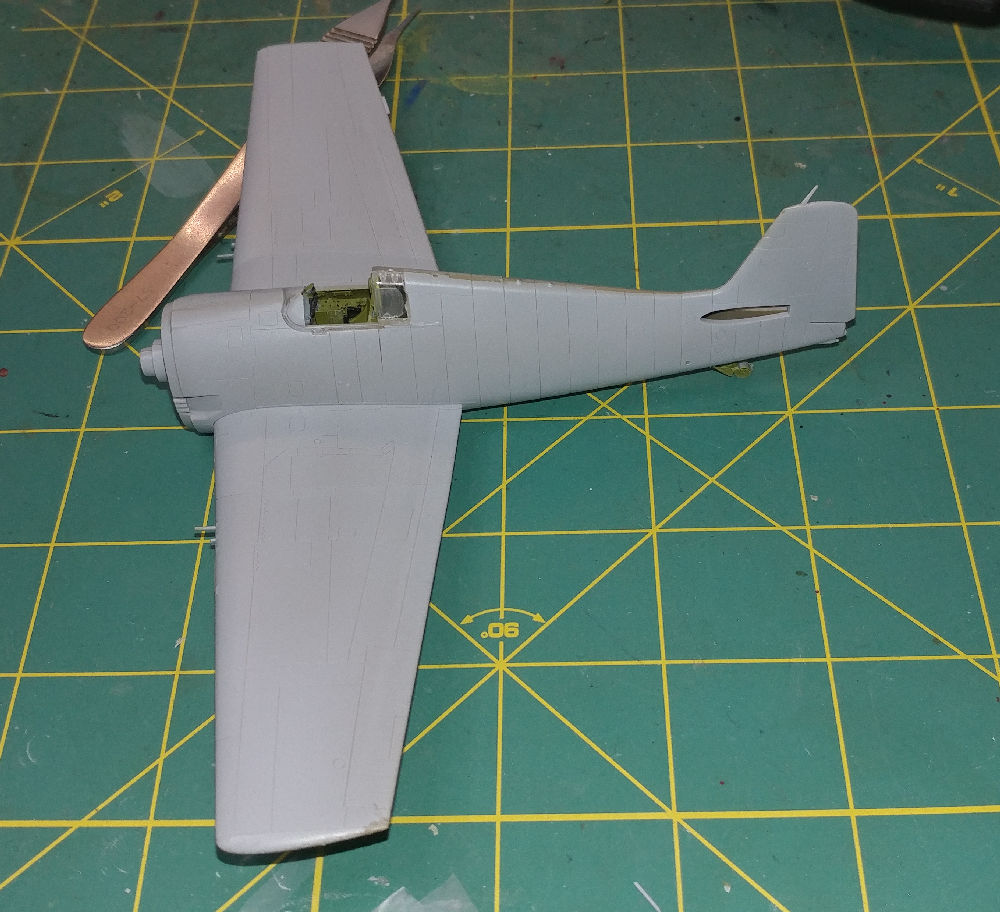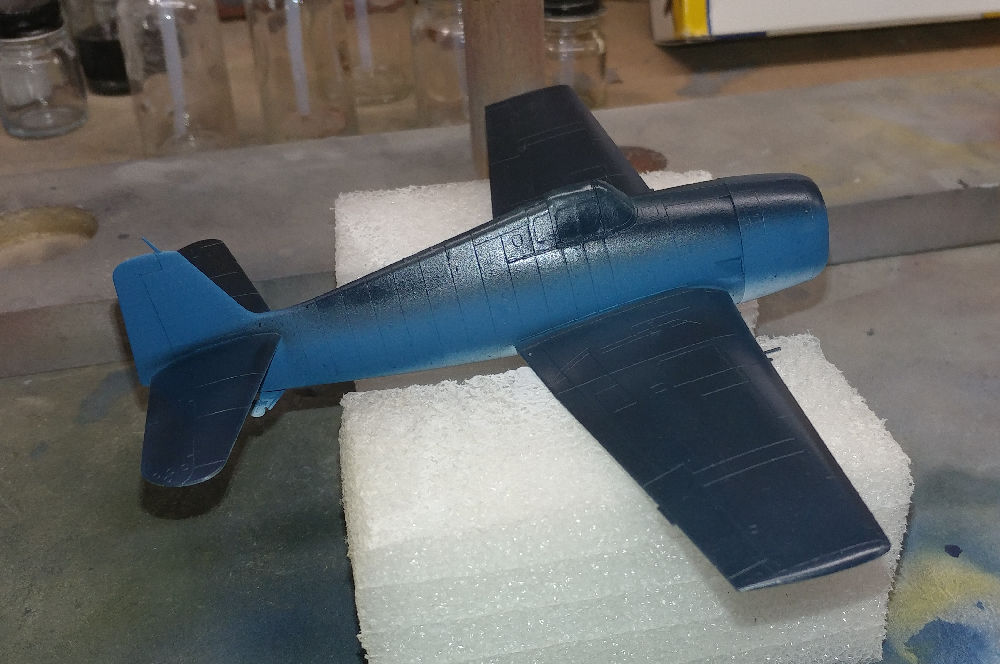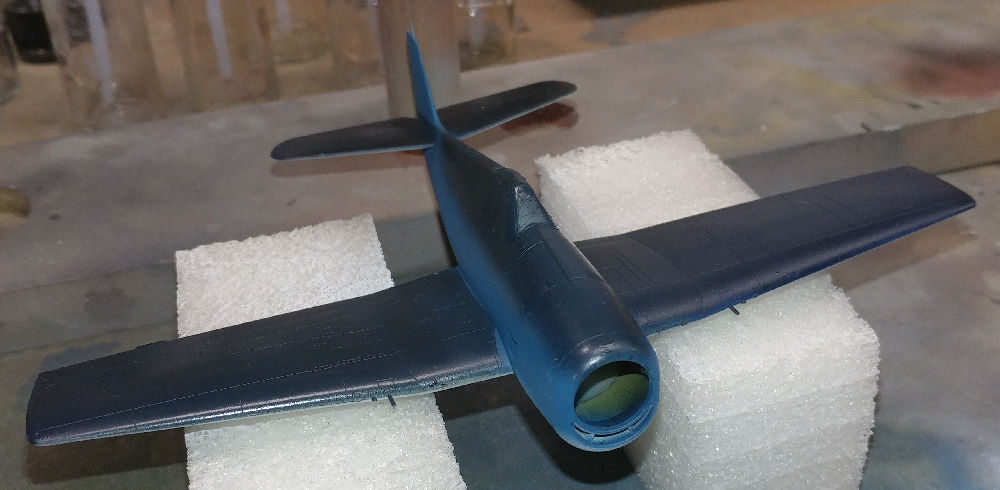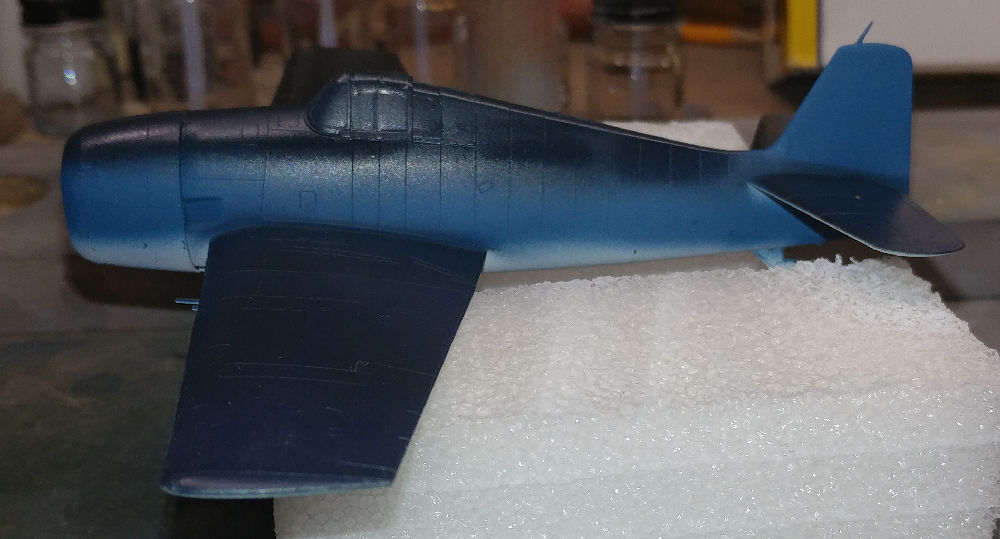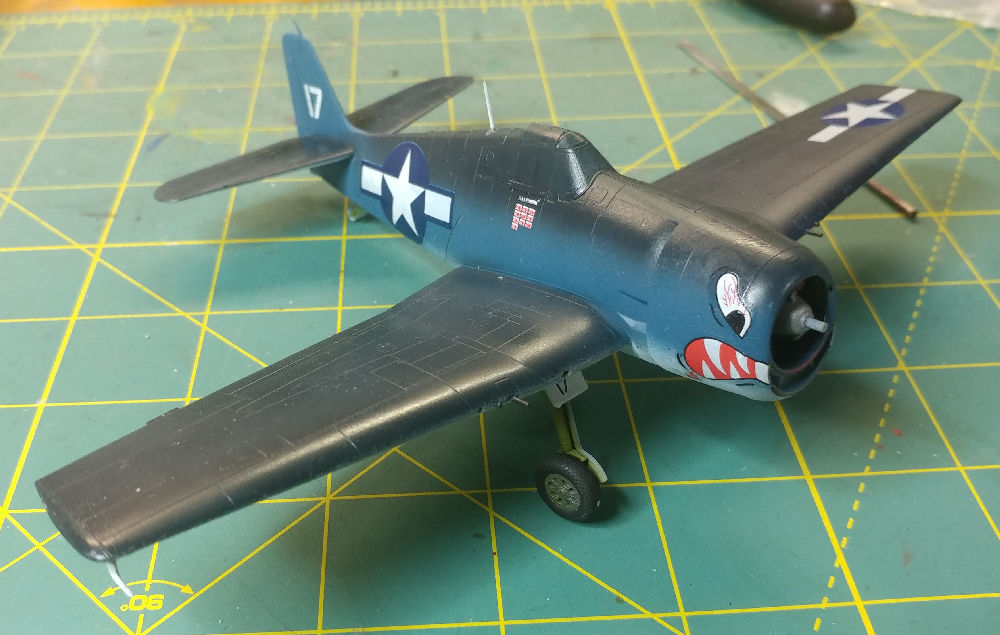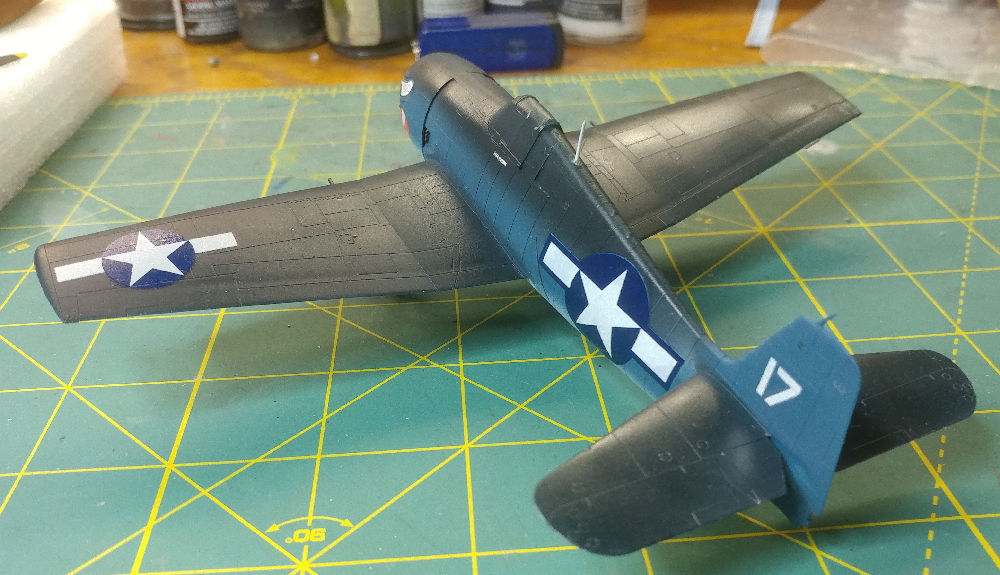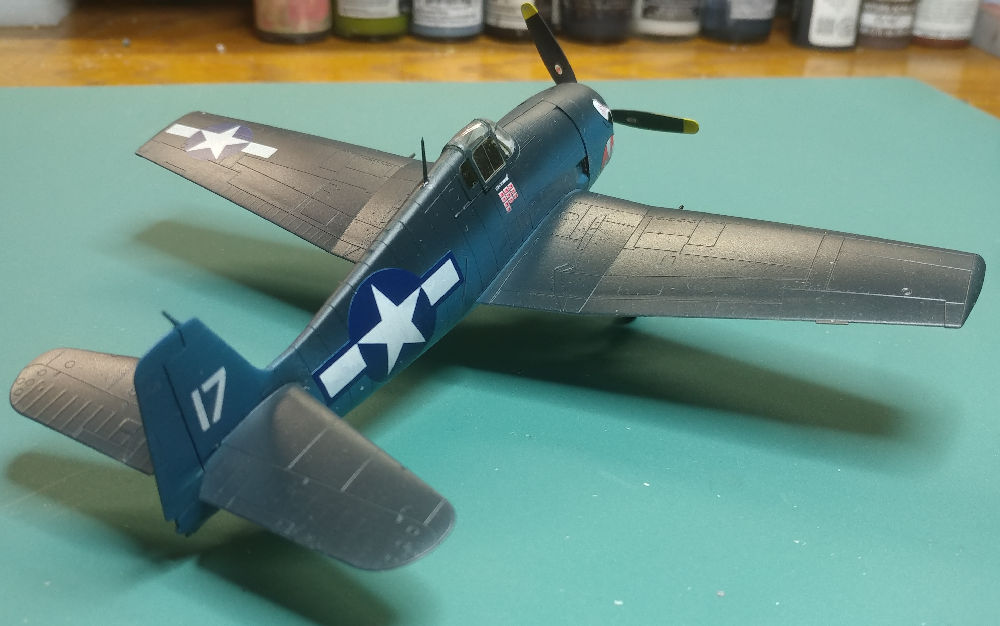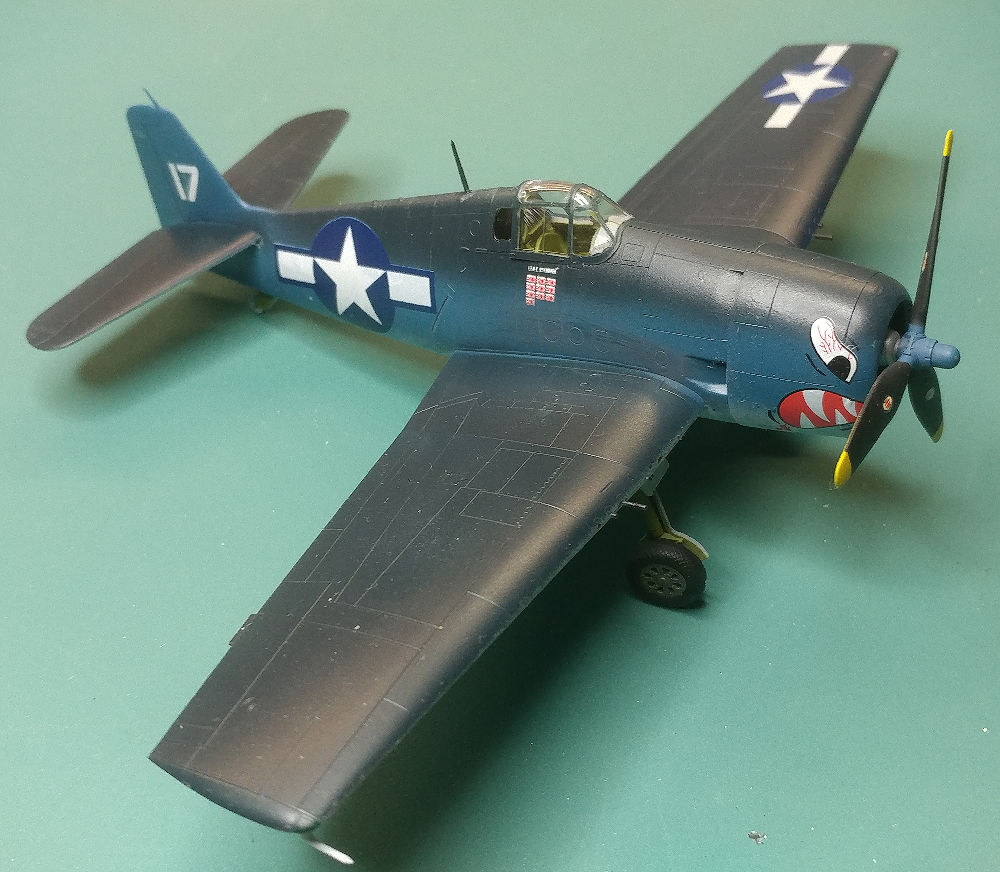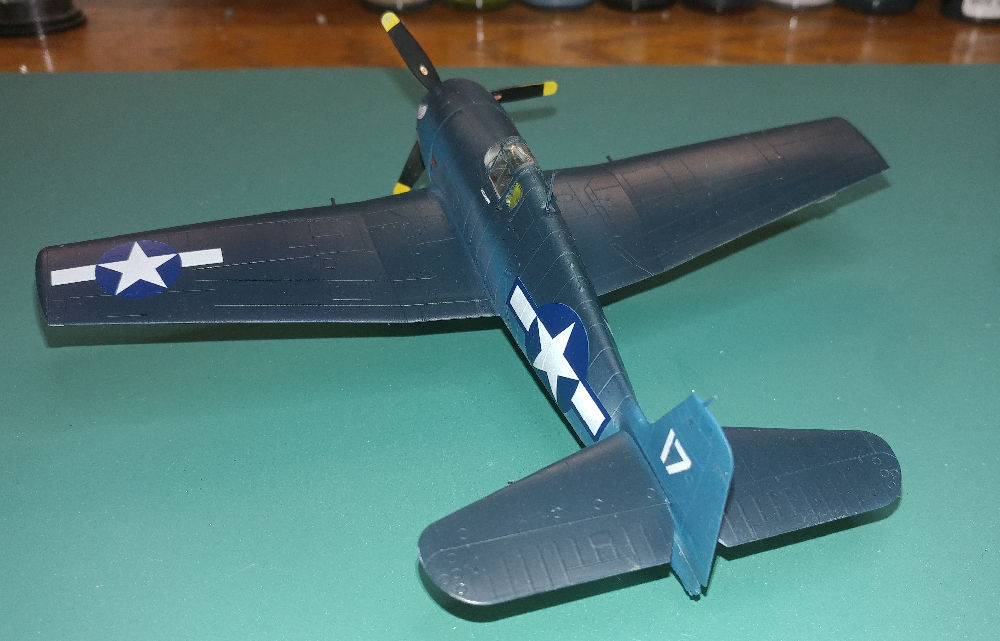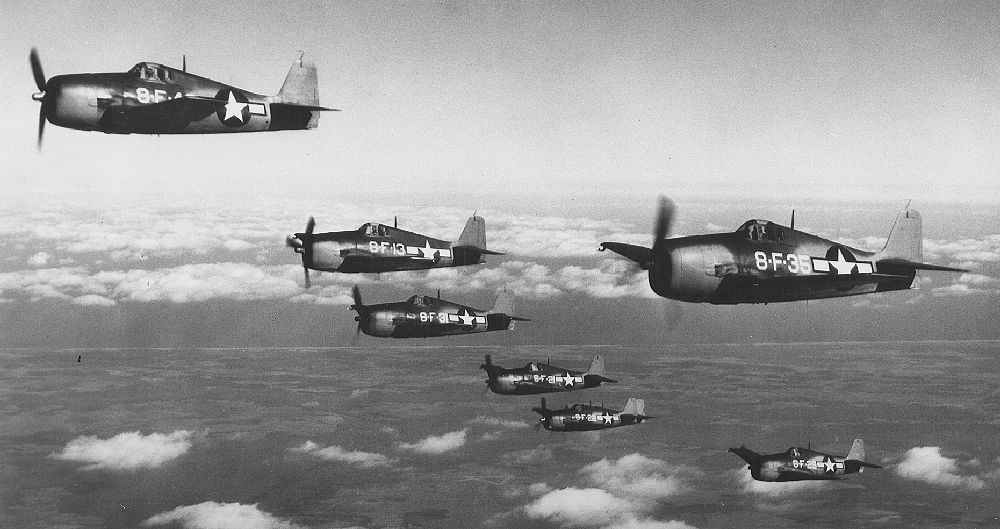
| ||
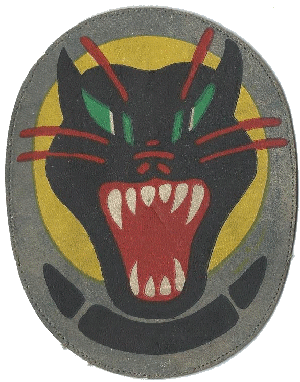 |
Grumman F6F-3 Hellcat
Fighter Squadron VF-27, USS Princeton |
 |
| The F6F Hellcat was a carrier-based fighter designed to replace the F4F Wildcat and to counter the Japanese Mitsubishi A6M Zero, it was the United States Navy's predominant fighter during the second half of the Pacific War. Powered with the same 2,000 hp Pratt & Whitney R-2800 Double Wasp radial engine used in the Vought F4U Corsair and the P-47 Thunderbolt, the Hellcat had a top speed of close to 400 MPH,
Making its combat debut in September 1943, Hellcats were able to outperform the A6M Zero and establishe air superiority over the Pacific theater. Hellcats were credited with destroying over 5,200 enemy aircraft while in service with the U.S. Navy, U.S. Marine Corps, and Royal Navy Fleet Air Arm, more than any other Allied naval aircraft. After WW II the Hellcat was phased of service but remained in service as late as 1954 as a night fighter. Among the most recognizable markings carried by US Navy aircraft must be those of Hellcats of VF-27 flying off the
USS Princeton. Hellcat bearing the number "17"was the personal mount of LT R. E. Stambook. Stambook attained 11 kills
during his combat career. The sharkmouths and bloodshot disappeared from the VF-27 Hellcats shortly after the Battle
of Leyte Gulf, the Philippines. USS Princeton was sunk by Japanese naval bomber on October 24, 1944.
The sharkmouths and bloodshot eyes disappeared from the VF-27 Hellcats shortly after the Battle of Leyte Gulf
|
|
||||||||||||||||||||||||||||||
| The Kit:
Eduard 7414, 1/72nd scale The basic kit is availabile as profi-pack, dual combo and weekend edition. The main difference between the kits are the extras.
This kit is as advertised, a no frills, weekend build. There are three sprues in grey and Tan, Clear canopy parts and a set of decals with options for only one aircraft. The cockpit comes with two control panels, one with Guages and dials and completely blank to be used with the cockpit upgrade.
|
|
Click to enlarge
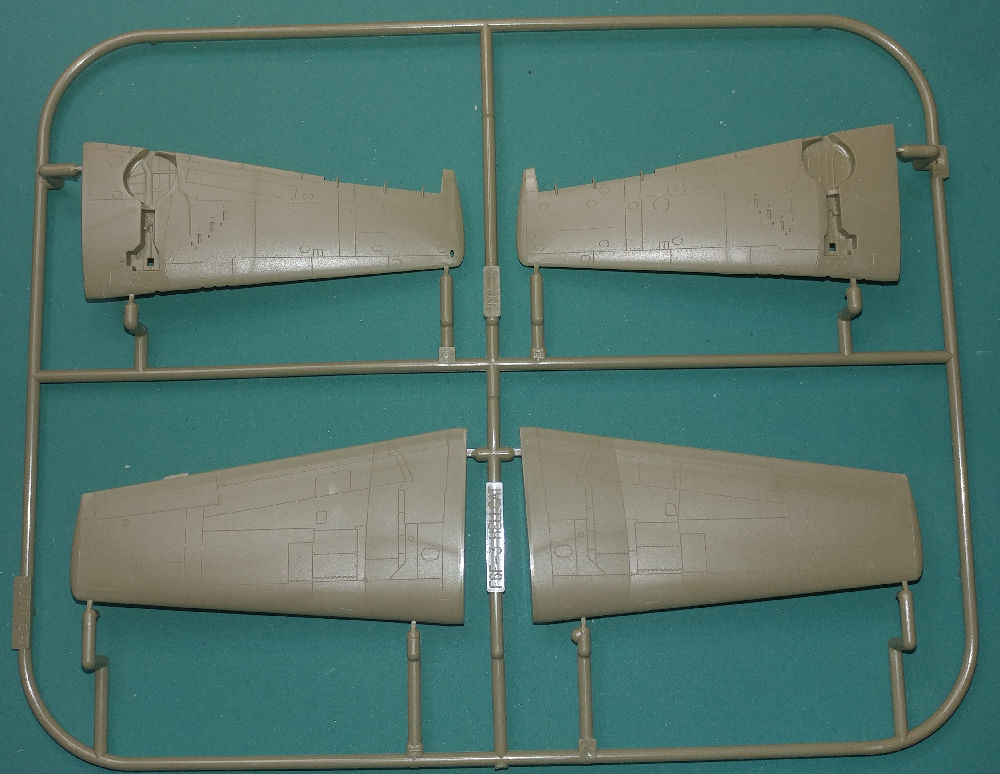
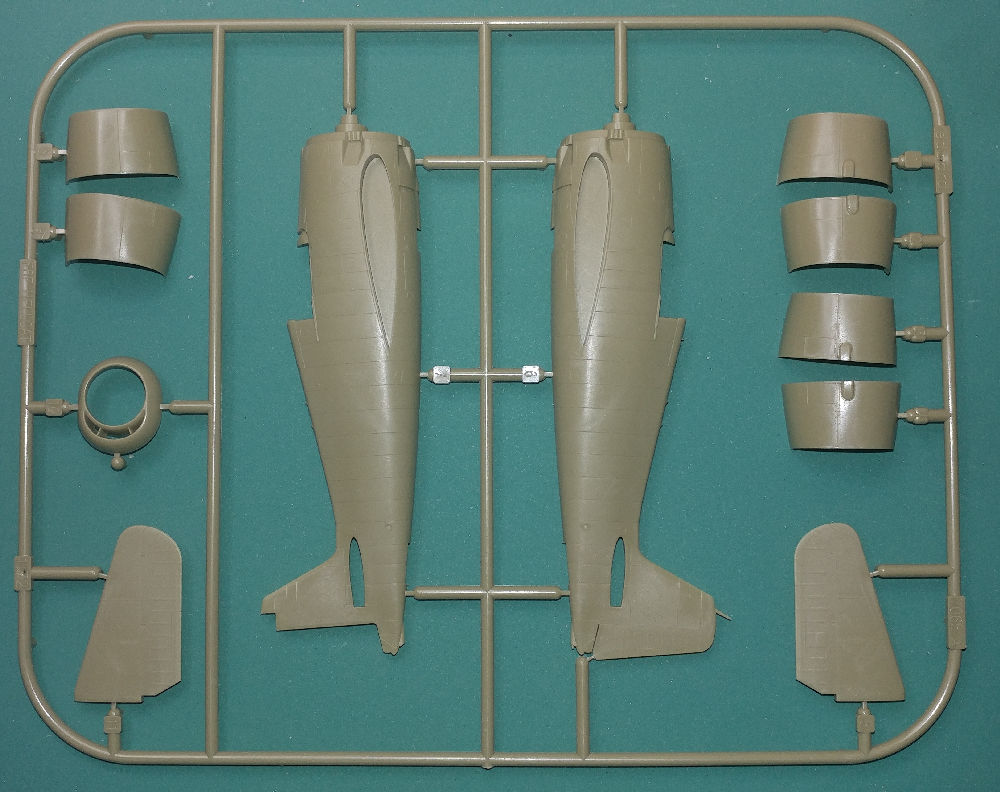
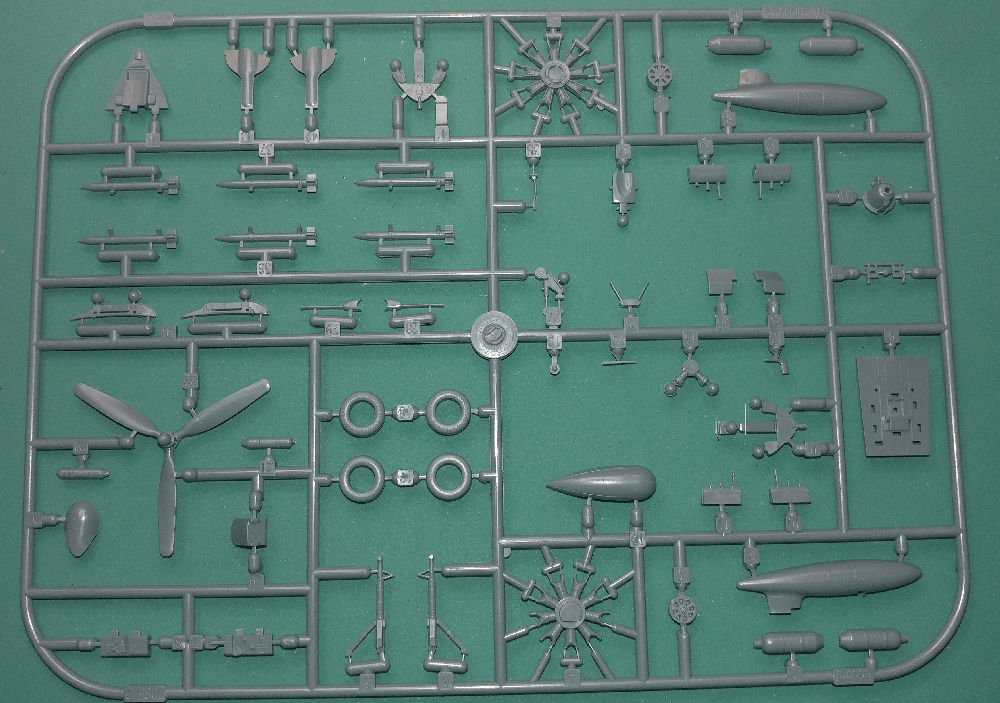
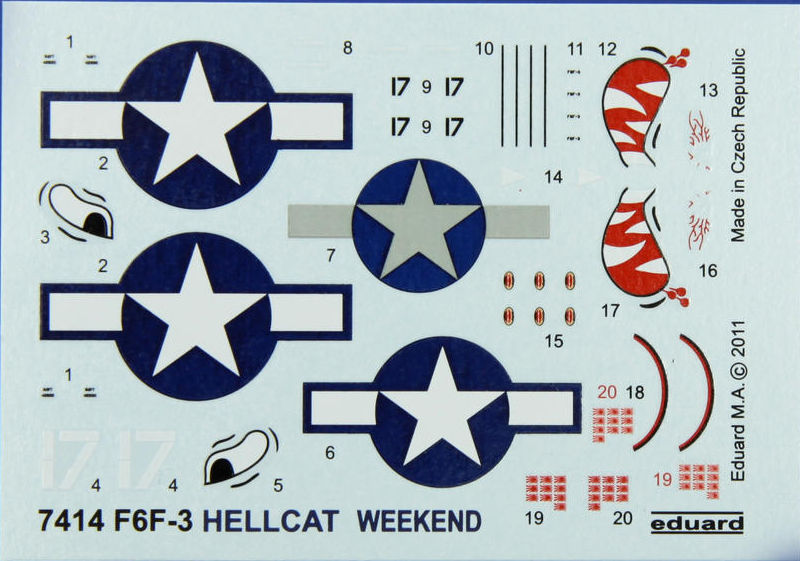
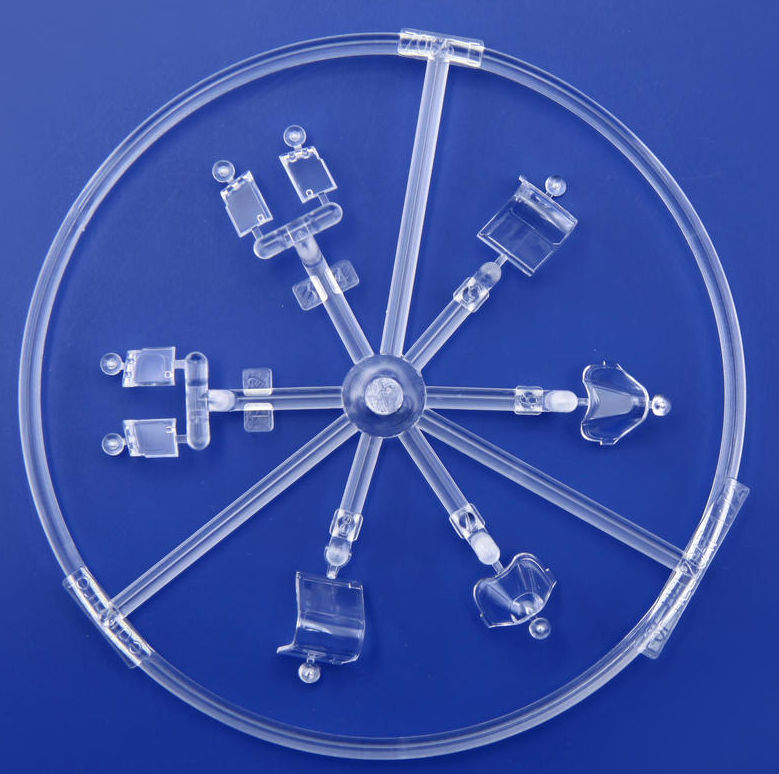
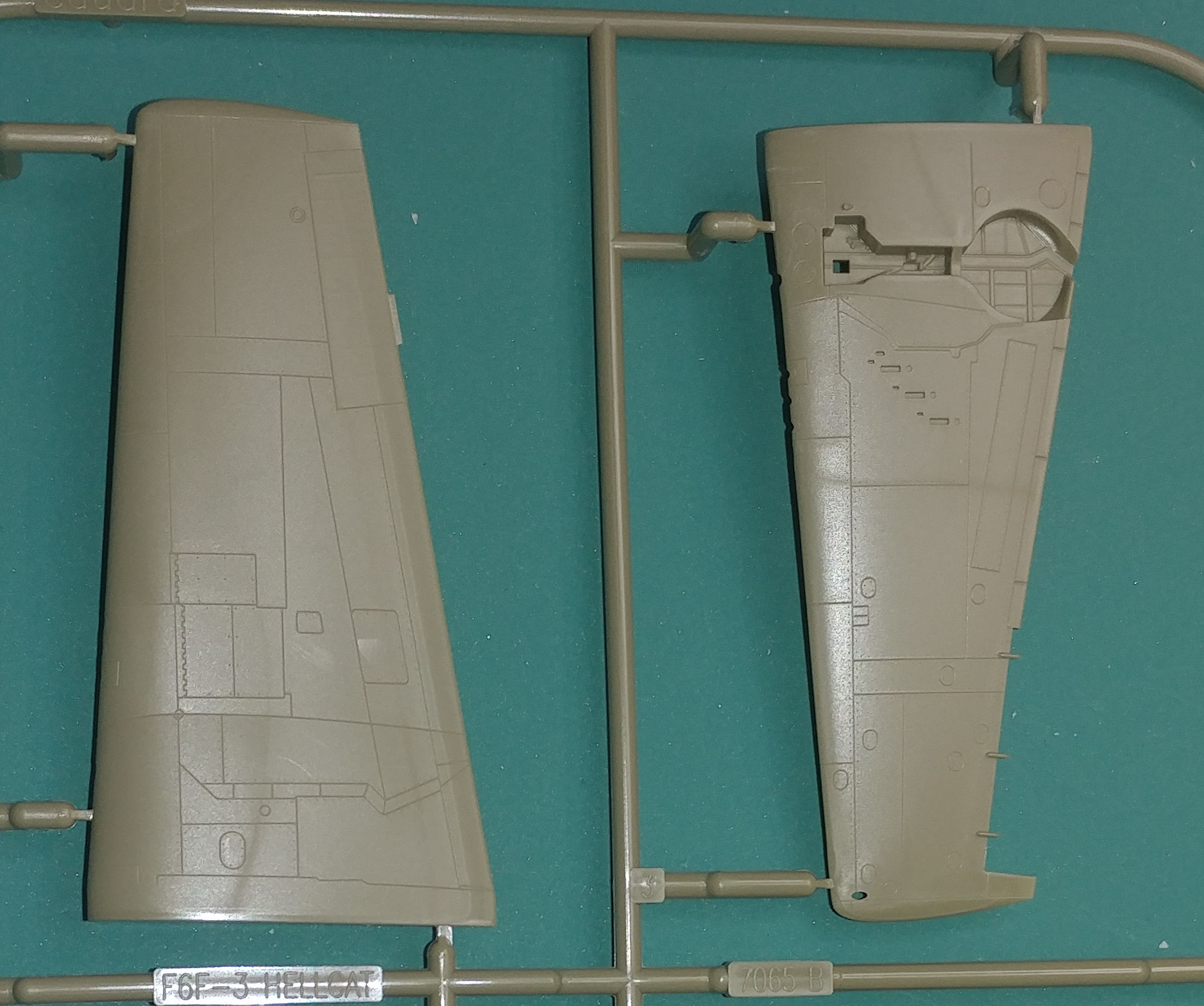
| |
|
The Build: This is a strictly out of box build. The entire kit can be assembled in a couple hours depending on the level of detail you wish to add. | |
|
Paint & Decals: The color scheme for this aircraft is typical of the early years or WW II, Dark Blue top, wings and horizontal stabilizer, White undersides and non-spec Blue along the sides and the usual Chromate Green interiors The decals are a little on the sparse side, just the basics with minimul stenciling.
|
|
|
|
|

|
|
Shown with the cyberhobby version
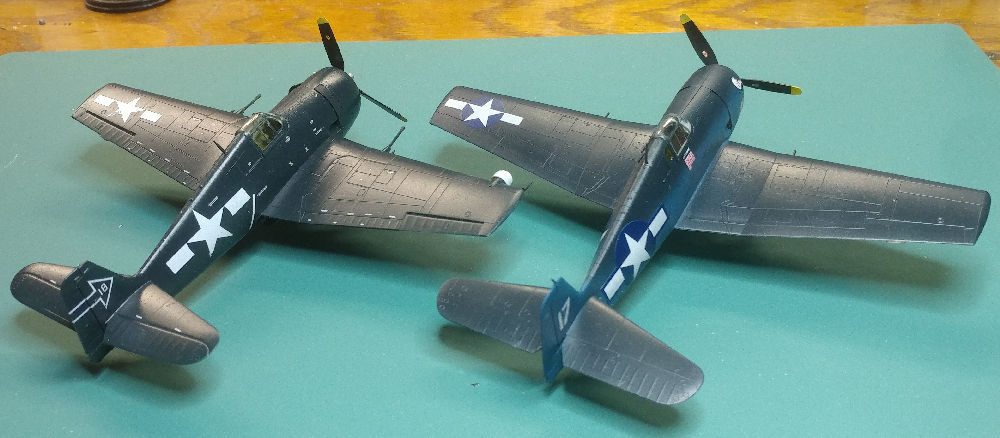
|
|
|
Final Notes & thoughts:
just my
Worth |
|
